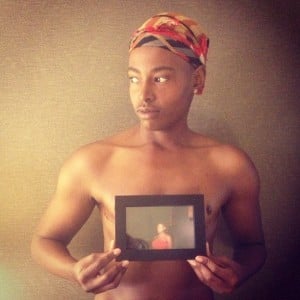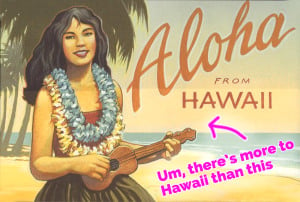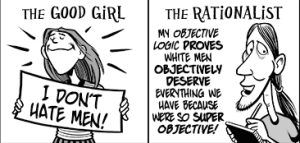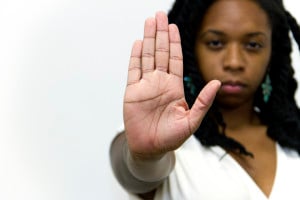Imagine a community where everyone is accepted regardless of gender, sexuality, or any other social identity. A community where you’re free to express yourself however you want, and to find others who share the interests that people have told you are “too weird.”
If you’re someone who’s in fandom, then for you that community already exists.
As defined by Wikipedia, fandom is “a term used to refer to a subculture composed of fans, characterized by a feeling of empathy and camaraderie with others who share a common interest.”
People in fandom already know all of the wonderful things it can bring: fanfiction, fanart, and even fan videos that take clips from existing movies and turn them into completely different movies.
It’s pretty awesome.
And when fans are given the power to create their own stories based on the fictional media they love, they can create the representation that they don’t see in the mainstream.
I would know. I’ve done it plenty of times myself. And as a feminist who loves fictional media, it’s an incredible tool!
We fans can give background stories and three-dimensional personalities to female characters ignored by the original narrative; or we can imagine what it would be like if our favorite characters were queer, transgender, or non-binary.
How many times have you left the movie theater or closed a book and wondered “what if?” How many stories did you write in your head that continued where the original narrative left off?
Plenty of times, I’m sure. It’s all part and parcel of being a fan.
The best part of fandom for me was reading fanfiction where my favorite characters were queer. In fandom, the protagonists of all the fictional media I consumed were people just like me. I loved it, and I loved that I could get all of that in fandom.
However, fandom wasn’t (and still isn’t) perfect. I saw a lot of misogyny, heterosexism, transphobia, and racism during my time in fandom.
For all the writers who gave female characters the nuanced characterization that they deserved, there were many others who reduced them to the jealous home wrecker who ruins the happy relationship between two male characters.
And while white (male) characters received a lot of attention from fans, I often saw white fans ignore the characters of color or even subject them to racist interpretations and jokes.
Maybe you haven’t seen any of this for yourself, but trust me, it’s real. I’m sure other fans of color can back me up.
It’s especially nerve wracking when we fans of color speak up about the racism we see. We’re labeled as “social justice warriors” who are out to ruin everyone’s fun, when in reality we just want to be treated humanely.
As you can imagine, that’s not a pleasant experience. And it certainly contradicts the image of fandom as a progressive utopia.
If fans of color have to deal with the same racism in fandom that we experience offline, then maybe it’s too early for white fans to start patting themselves on the back for their acceptance of diversity.
In order for fandom to really become the inclusive place that it purports to be, white fans need to examine their own privilege and racism.
That’s a big task, I know, but here are some concrete things that white fans can start doing in order to make fandom more welcoming to fans of color.
1. Stop Imagining That Every Character Is White
There’s a trend in fandom where fans default to imagining characters as white, particularly if they’re the protagonists. It leads to confusion (and racism) whenever a movie or TV version of that character isn’t white.
Remember when Amandla Stenberg was casted as Rue in The Hunger Games movies and fans kicked up a fuss because they thought she didn’t look “innocent” enough?
Yeah, well, those fans were racist.
As the creator of the Hunger Games Tweets Tumblr writes, the complete disappearance of sympathy for Rue once fans realized that she was Black is linked to the injustices and oppression that Black people face in the real world.
Black children, unlike white children, are not afforded innocence. Even within the school system, teachers are more likely to label Black students as troublemakers, and Black girls are disciplined more often and severely than their white counterparts.
It’s not a coincidence that these types of attitudes extend to Black characters in fictional media, too.
Because of racist attitudes like these, Black people (and other people of color) are never seen as the heroes.
They’re not seen as relatable, which is why we as a society tend to imagine the protagonists in fictional media as white people.
It’s a terrible trend, and one that needs to change.
2. Stop Using ‘Historical Accuracy’ as an Excuse to Erase People of Color from Historical Fiction
People of color have existed since the dawn of time, just like white people. And yes, we existed in places and times where you thought only white people lived.
Why have you never learned that? Well, probably because just like Hollywood, history likes to erase people of color from its annals.
3. Don’t Whitewash
Whitewashing is the act of changing a character of color to a white character. It can be done through casting practices, as with The Last Airbender movie, or it can be done through fanworks that reimagine a character of color as white.
Whatever the medium, it’s racist.
You could argue that people often reimagine white characters as characters of color (popularly known as “racebending”), so why not do the opposite?
The short answer is this: When people racebend a character, they create more diversity. If they’re fans of color, they do so to see themselves in the fictional media they love.
When people whitewash a character, they decrease diversity.
They’re erasing a character of color and, whether consciously or unconsciously, sending the message that they’d relate more to the character if the character was white.
So I’ll say it again: That’s racist!
4. Exercise Sensitivity and Care When Writing or Drawing Characters of Color
It’s great if you want to write or draw the characters of color in your fandom. Maybe you even want to racebend a white character to reimagine them as a person of color.
But if you’re planning on working with characters of color, then you have to accept that your understanding of them is shaped by your whiteness.
As Daniel José Older writes, “When we create characters from backgrounds different than our own, we’re really telling the deeper story of our own perception.”
When we write fanfiction, we’re always telling the story of our own perception of the character.
But as white fans, that perception might be skewed.
If you’re going to write or draw characters of color, be very careful about how you interpret them. Start by reading that Daniel José Older article; it has some useful tips.
5. Stop Putting Characters of Color (Especially Women) on Pedestals
Consider this: Why do white characters (male and female) get loving, nuanced analyses of their personalities, while characters of color (especially women) only get comments like, “She’s a goddess?”
Appreciating characters of color doesn’t mean putting them on pedestals. That’s actually pretty dehumanizing.
It might seem like a positive thing on the surface, but if all you can talk about in a character of color are the good (surface) traits, then you aren’t seeing them as regular people just like you.
In other words, you’re not acknowledging their humanity, flaws included. You’re just seeing them as one-dimensional, flat caricatures, albeit caricatures with positive qualities.
Sound familiar?
6. Listen to Fans of Color When They Call You Out
I witnessed a debacle once where a Black fan told a white artist that the way she’d drawn a Black female character was anti-Black. The fan explained to the artist why the art was harmful, but rather than listening, the artist laughed off her concerns.
Way to make someone feel welcome, right?
If a fan of color tells you that something you’ve done is racist, listen to them. They aren’t trying to bully you or ruin your fun. They’re trying to protect their own humanity.
They’re trying to have fun, too, and they can’t do that if you’re mocking, stereotyping, or even being violent towards people like them.
7. Learn to Accept Being Called Out Gracefully
All you have to do is apologize, promise not to do the racist thing again, and stick to that promise. Don’t make a fan of color feel bad for calling you out. They probably didn’t want to in the first place.
Remember: You’re not the victim here. You’re not the one who’s been hurt.
So learn to accept being called out gracefully, and work on unlearning your white privilege so you won’t have to be corrected as often.
8. Accept That Social Justice Does Have a Place in Fandom
I saw, and still see, a lot of fans complaining that “social justice warriors” are out to ruin everyone’s fun. These fans argue that there’s no place in fandom for social justice.
But why wouldn’t there be?
Social justice isn’t a fad or a hobby.
Social justice is just what it sounds like: justice for everyone, a way to right the wrongs against those who’ve been socially marginalized.
And if fandom purports to be a place where socially marginalized characters get justice in representation, then isn’t it actually the perfect place for social justice?
***
I understand that fandoms are supposed to be safe places where you get to be your true self and share your interests without fear of judgment.
But it’s not enough for it to be safe only for you. It has to be safe for everyone else, too, and that means expanding your definition of safety.
After all, as a white fan, you don’t have to worry about racism. A fan of color does, and that’s why it’s important that you do your part in making sure that racism has no part in fandom.
You need to take the time to learn how racism works and to unlearn the behaviors that it teaches you. Only then can fandom truly be the inclusive, progressive space that it claims to be.
[do_widget id=’text-101′]
Kerry Truong is a Contributing Writer for Everyday Feminism. They are a queer diasporic Vietnamese womxn and graduated this spring with a double degree in English and Asian American Studies. When they’re not philosophizing about this at length, they’re reading, taking long walks, or cooing over all the dogs who cross their path. Read their Everyday Feminism articles here.
Search our 3000+ articles!
Read our articles about:
Our online racial justice training
Used by hundreds of universities, non-profits, and businesses.
Click to learn more





















